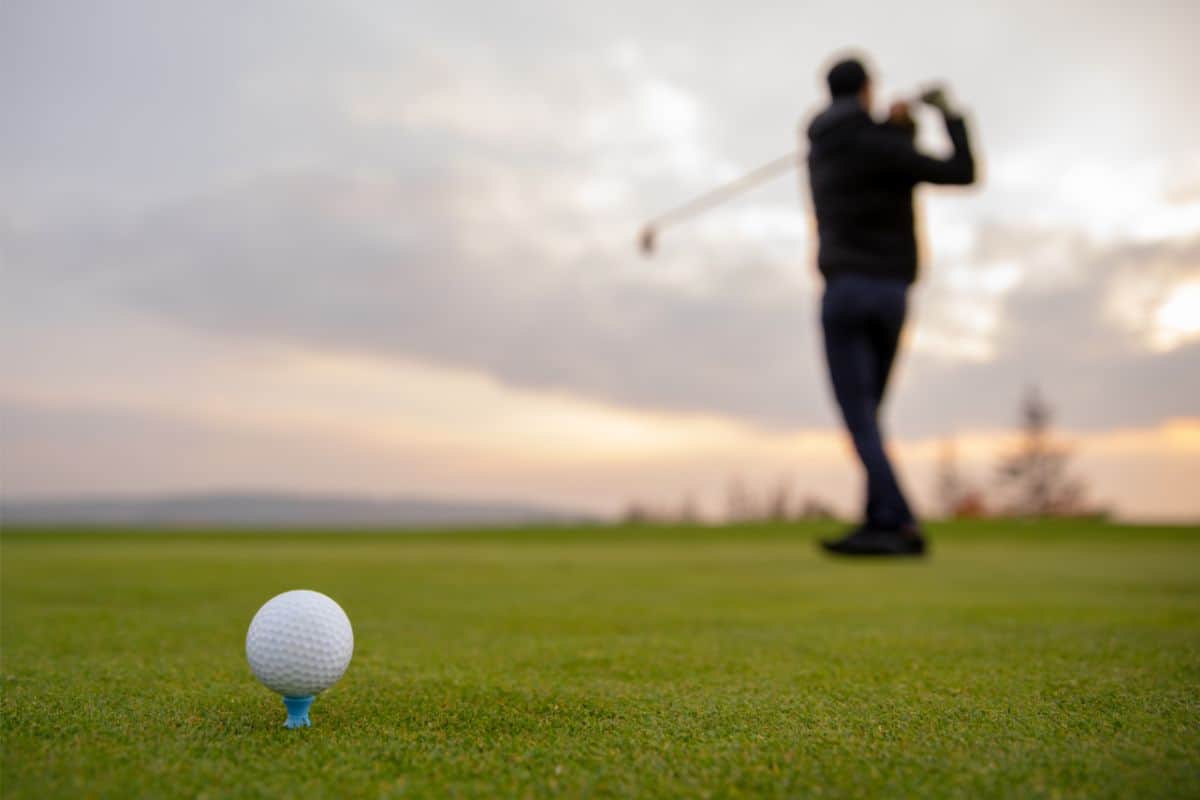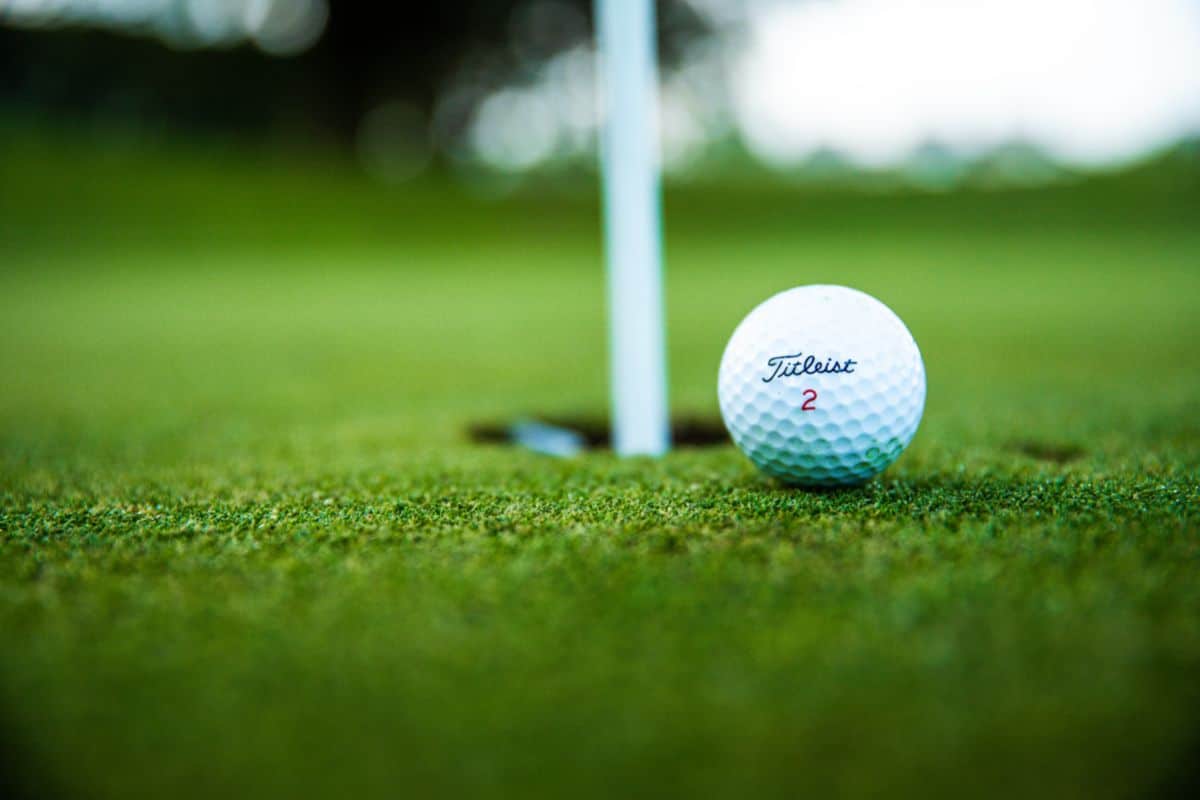There are many different types of golf balls available today. Some of them are designed to fly farther than others.
These are usually considered premium balls. Most golfers prefer these because they feel more comfortable when hitting the ball.
Other golf balls are designed for shorter distances. These are usually considered standard balls.
Many golfers prefer these because of their affordability. We’ll tell you all about the different things that make golf balls work how they do!
Golf Ball Basic Information
Golf balls are made up of different materials. A 2 piece ball is cheap and easy to make. It produces less spin than other types of balls.
A 3 piece ball has more spin and is better for players who hook or slice the golf ball.
A 4 piece ball has even more spin and is better if you want to play golf with high power. A 5 piece ball is the highest quality and is very expensive.
Golf balls come in three different types. Low spin balls are made for the average golfer. Medium spin balls are made for players who hook or slice the ball.
High spin golf balls are made for scratch players who want a lot of control over the ball.
Golf balls are made up of different materials. Some are harder than others. A high-compression ball requires more force to compress it.
So if you want to increase your distance, you need to use a lower-compression ball.
A golfer who swings the club slowly will probably want a softer golf ball. A golfer who swings quickly will probably want a harder golf ball.
Golf Ball Layers
Golf balls are made up of layers. The number represents how many layers there are in the golf ball. The first layer is the cover, and the last layer is the core.
The layers are numbered starting from the inside out. The outermost layer is the cover, then the intermediate layer, then the innermost layer is the core.
The layers of a golf ball are compressed together when you play a shot. When you swing your club, the layers get stretched apart.
This causes the layers to compress back together again. When you hit the ball, the layers bounce off each other.
This bounces sends vibrations throughout the layers. These vibrations make the ball move around.
A golf ball layer should be firm enough to withstand high speeds but soft enough to feel comfortable when hitting the ball.
The ball should also spin well and compress easily. A golf ball can be soft or hard depending on how many layers there are. The more layers a golf ball has, the harder it is to break.
Golf balls are usually made up of 2, 3, 4, or 5 layers. Two-piece balls are cheaper than other types but are less durable.
Three-piece balls are better than two-piece balls because they’re more durable. Five-piece balls are the most expensive and are considered the best type of ball.
Golf Ball Spin
A golfer needs to know about the spin of a golf ball. He or she must take this into consideration when choosing clubs and shots.
Golf balls are made up of different materials that all change the spin. A low-spin ball is better for people who want to hook or slice the ball.
A medium-spin ball is best for people who want the ball to go straight. A high-speed ball is best for people like scratch players.
There are three types of golf balls: low-spin, medium-spin, and high-spin. Low-spin balls are used by beginners because they hook easily.
Medium-spin balls are used for players who need more control than beginners but less control than professionals.
High-spin balls are used primarily by professional golfers.
Golf Ball Compression
The golf ball compression is how much pressure it takes to correct the ball. Low compression golf balls are designed for common players who don’t have the fastest swing speed.
They are more simple to hold straight and most people will get the most distance from them. If you swing fast, then you might find a benefit from using a higher compression golf ball.
There are many different types of golf balls available today. Some of them are designed to be used by people who play slow games while others are made for players who want to hit long drives.
Golf balls come in various sizes and weights. Layers, Spin, Compression, Swing Speed are some of the factors that determine how well a ball performs.
Low compression balls are best for people who play golf at slow speeds.
Mid-range compression balls are best for people who swing at medium speeds. High compression balls are best for players who swing fast.
Factors to Consider When Buying a Golf Ball
Golf balls come in many different sizes, weights, and colors. You need to choose the right size, weight, and color for your game.
You also need to make sure that the ball doesn’t fly too far or too short.
Golf Ball Types
Distance – Golf balls are designed to fly as far as possible. This is done by increasing the size of the ball and decreasing the weight.
Spin Control – Golf balls are designed with different levels of spin to help players control how the ball reacts when hitting the ground.
These include high-lofted, mid-lofted, low-lofted, and oversized golf balls.
Tour Performance – Golf balls are made with different materials to give players more control over how the ball reacts when it hits the ground.
These include metal-core, wound, polyurethane, and balata.

Distance golf balls typically have more power than regular golf balls because they have a bigger core and thinner cover.
Golfers should think about the core as the engine of the ball, and the cover as the car. A bigger core means more energy, while a thinner cover means less drag.
Spin control golf balls are designed for amateurs who struggle with spin. They want to reduce hooking and slicing.
They are made of soft materials that allow them to be used by beginners. Popular and Bridgestone e6 Speed are great spin control golf balls.
Golf balls come in many different shapes and sizes. Two piece balls are used by beginner players because they’re easy to play and last longer than other kinds of balls.
Multi-layer balls are used by advanced players who want to get maximum distance. High performance balls are used by professional players who need to make long drives.
High performance golf balls are more expensive than regular ones. Regular golf balls are less expensive but are more durable.
A good golfer should use a two piece golf ball if he/she wants to maximize distance. A two piece golf ball has a large core and thin layer of cover.
This makes the ball more powerful. A two piece golf ball also gives the player more control over the ball.
Multi-layered golf balls are designed to be used by slower players who want more distance. These balls are made up of several layers that work together to give the ball better performance.
A short shot using a slow swing will use the outer layers to provide the spin needed to get the ball to stop on the green. A long shot using a fast swing will use the inner layers to provide the distance needed.
Cover
Golf balls come with one of three types of covers: Surlyne, Urethane, or Polyurethane. Surlyne is an ionomer resin made by DuPont.
It is very durable and resistant to scratches. It was first used as a cover for a golf ball in the 1960s.
It is found on almost all non-tour level balls because it gives maximum distance.
Urethane is soft enough to be used on high-end multi-layer balls, but it isn’t as durable as Surlyn.
It gives players a better feel and performance when playing the short game.
A hard resin cover is used for long drives. A soft rubber cover is used for short shots. Both types of covers provide better distance.
Feel
Low compression balls feel softer because they deform less. Higher compression balls need firmer hits to deform. These balls are better for people who have fast swings.
Golf balls used to have compression ratings, but now they don’t. Manufacturers use new technologies to make them feel soft.
Compression numbers are hard to compare because each company uses a different test.
There are many types of materials used to make golf balls. Some of them include rubber, polyurethane, balata, ionomer resin, and others.
The most common material used in making golf balls is polyurethane. This material is also known as PU or foam.
A 90 compression is considered average for most recreational golfers. An advanced golfer uses a 100 compression.
Speed
The ball hits the ground after traveling about 160 miles per hour. Backspin alone makes the ball rotate faster than any type of golf club. Wedge shots can go as fast as 10,000 rpm.
Size and Weight
The golf balls must be made out of rubber or plastic. Rubber balls are harder to make but last longer.
Plastic balls are easier to make but break down quickly. Golf balls need to be at least 1.68 inch in diameter. Smaller balls travel further because they face less wind resistance.
How Can the Compression of a Golf Ball Affect Your Game?
Golfers play with different types of golf balls depending on their needs. Some prefer softballs while others want firmer balls.
Most golfers use high compression balls, but some prefer low compression balls. Each plays differently!
What Ball Should I Use Based on My Handicap?
Golfers should choose a lower compression ball if they’re playing with a high handicap. Higher compression balls are harder and compress less, making them easier to hit but creating shorter distances.
Low compression balls are softer and compress more, giving them longer distances but making them harder to hit. Mid to low compression balls are softer and give players more control over the ball.
Am I using the wrong ball?
A soft feeling ball will travel further than a harder one. You should try out different balls until you find one that suits your game.
Golfers should try out different brands of golf balls before buying them. There are many different types of golf balls available today, and each type is made differently.
Some are more expensive than others, but most of them are worth the money. The layers are the main thing about this game. You need to know how many you want to use.
What Ball Should I Use Based on My Swing Speed?
High-compression golf balls are designed to be used by those with faster swing speeds. Low-compression golf balls provide greater distance for those with slower swing speeds.
Should I Use a Different Compression Ball Based on Weather Conditions?
When you play golf in cold weather, your ball will be more compressed. You should use a slightly lower compression ball than usual to compensate.
Conclusion
Golf balls come in many different shapes and sizes. You should choose the right type of ball depending on what kind of game you play. For example, if you’re playing a short game you’ll want a soft, low-compression ball.
On the other hand, if you’re playing an approach shot or putting you’ll want a firmer, higher-compression ball.
Hopefully this guide has helped to teach you what you needed to know about golf balls!
- Should Tee Boxes Be Level? - January 23, 2024
- 3 Hybrid Distance - November 15, 2023
- Innovations in Golf Mobility: An In-depth Review of Top Golf Scooters - October 12, 2023
